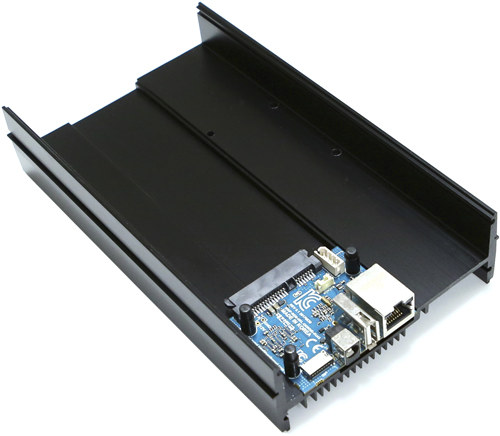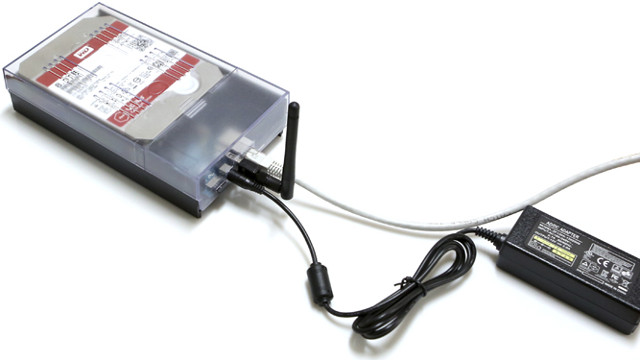We knew it was coming, and Hardkernel has now launched an updated version of the ODROID-HC1, called ODROID-HC2 based on the same Samsung Exynos 5422 board, but instead supporting 3.5″ hard drives.
The device can now be purchased for $54 plus shipping, but you may also consider adding some accessories like a 12V/2A power supply, and the top cover for the enclosure. [Update: Also listed on Ameridroid now] ODROID-HC2 specifications:
ODROID-HC2 specifications:
- SoC – Samsung Exynos 5422 octa-core processor with 4x ARM Cortex-A15 @ 2.0 GHz, 4x ARM Cortex-A7 @ 1.4GHz, and Mali-T628 MP6 GPU supporting OpenGL ES 3.0 / 2.0 / 1.1 and OpenCL 1.1 Full profile
- System Memory – 2GB LPDDR3 RAM PoP @ 750 MHz
- Storage
- UHS-1 micro SD slot up to 128GB
- SATA interface via JMicron JMS578 USB 3.0 to SATA bridge chipset
- Case supports 2.5″ or 3.5″ drives up to 27mm thick
- Network Connectivity – 10/100/1000Mbps Ethernet (via USB 3.0)
- USB – 1x USB 2.0 port
- Debugging – Serial console header
- Misc – Power, status, and SATA LEDs;
- Power Supply
- 12V/2A via 5.5/2.1mm power barrel
- Backup header for RTC battery
- Dimensions – 197 x 115 x 42 mm (aluminum cooling frame)
- Weight – 361 grams
The company provides Ubuntu 16.04 with Linux 4.14, and OpenCL support, but other ditributions are available too including Debian, DietPi, OMV (OpenMediaVault) and others such as Armbian which has released stable Ubuntu and Debian server images for HC1 (but it should work for HC2 too). Source code can be found on Hardkernel’s Github account.
Just like the previous model, ODROID-HC2 is stackable, which explains why it does not sell with a top cover by default, so if you want to buy a single system that works out of the box and with a fully closed enclosure, you should add the optional 12V/2A power supply ($5.90) and a clear or black plastic case ($5.00) to your purchase.

Jean-Luc started CNX Software in 2010 as a part-time endeavor, before quitting his job as a software engineering manager, and starting to write daily news, and reviews full time later in 2011.
Support CNX Software! Donate via cryptocurrencies, become a Patron on Patreon, or purchase goods on Amazon or Aliexpress





